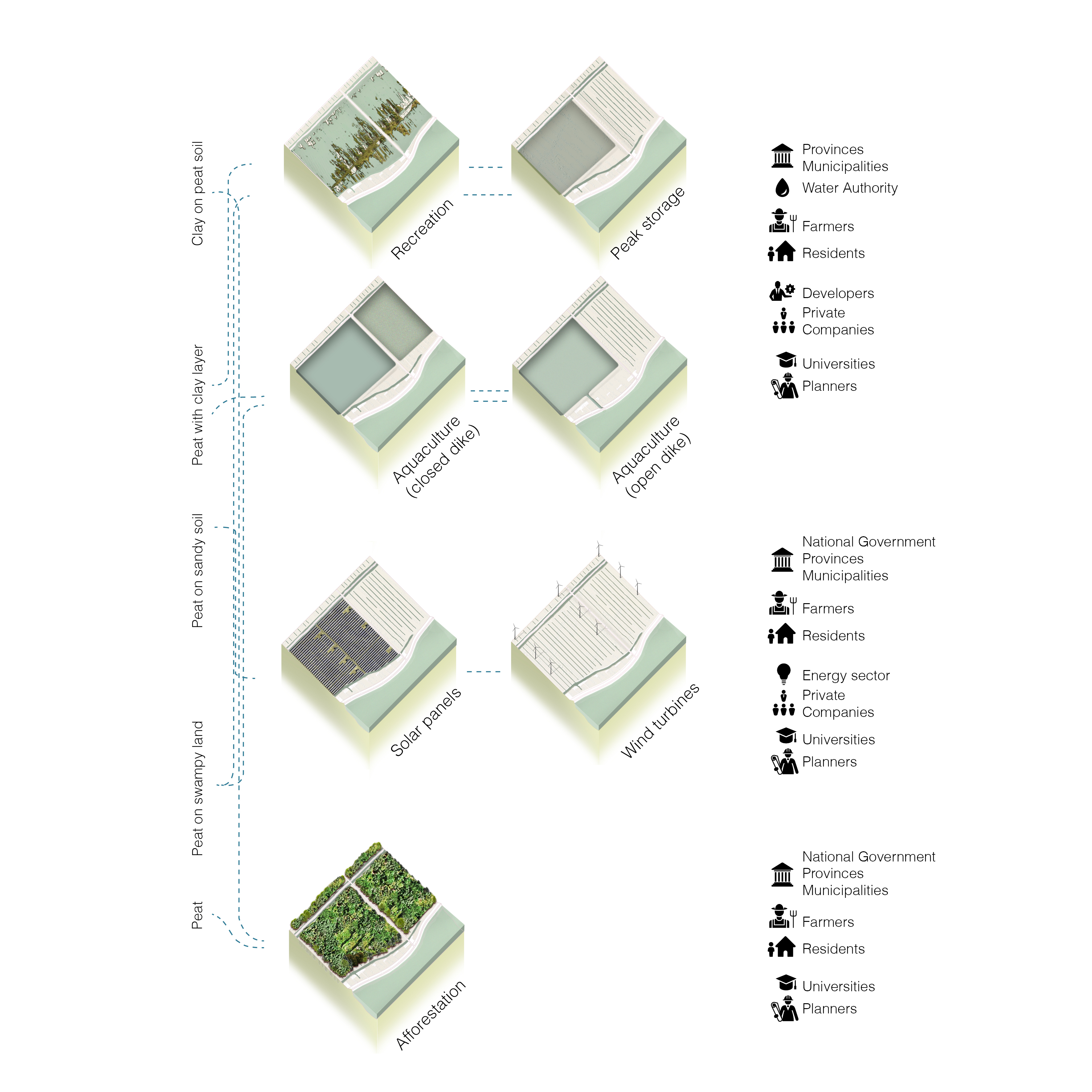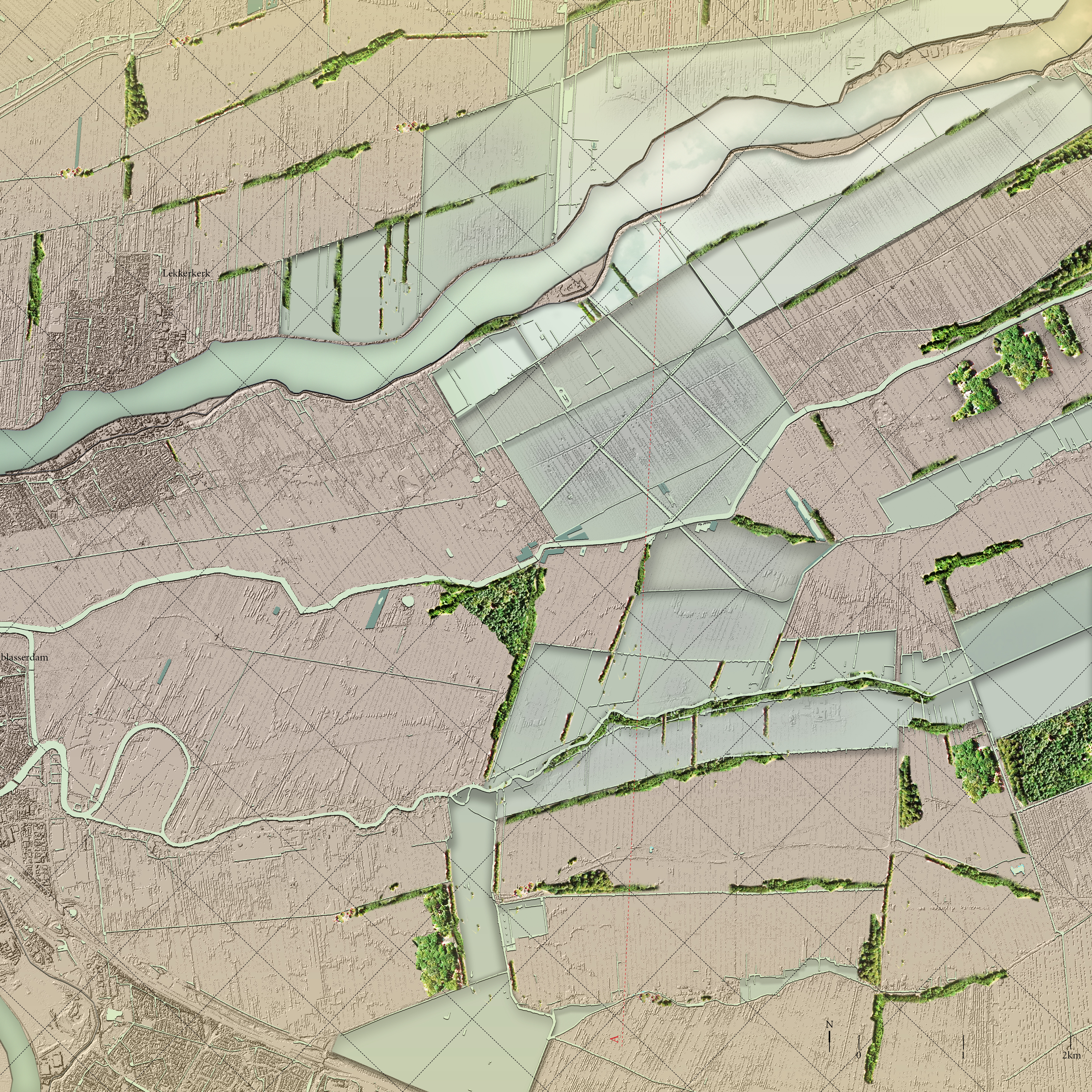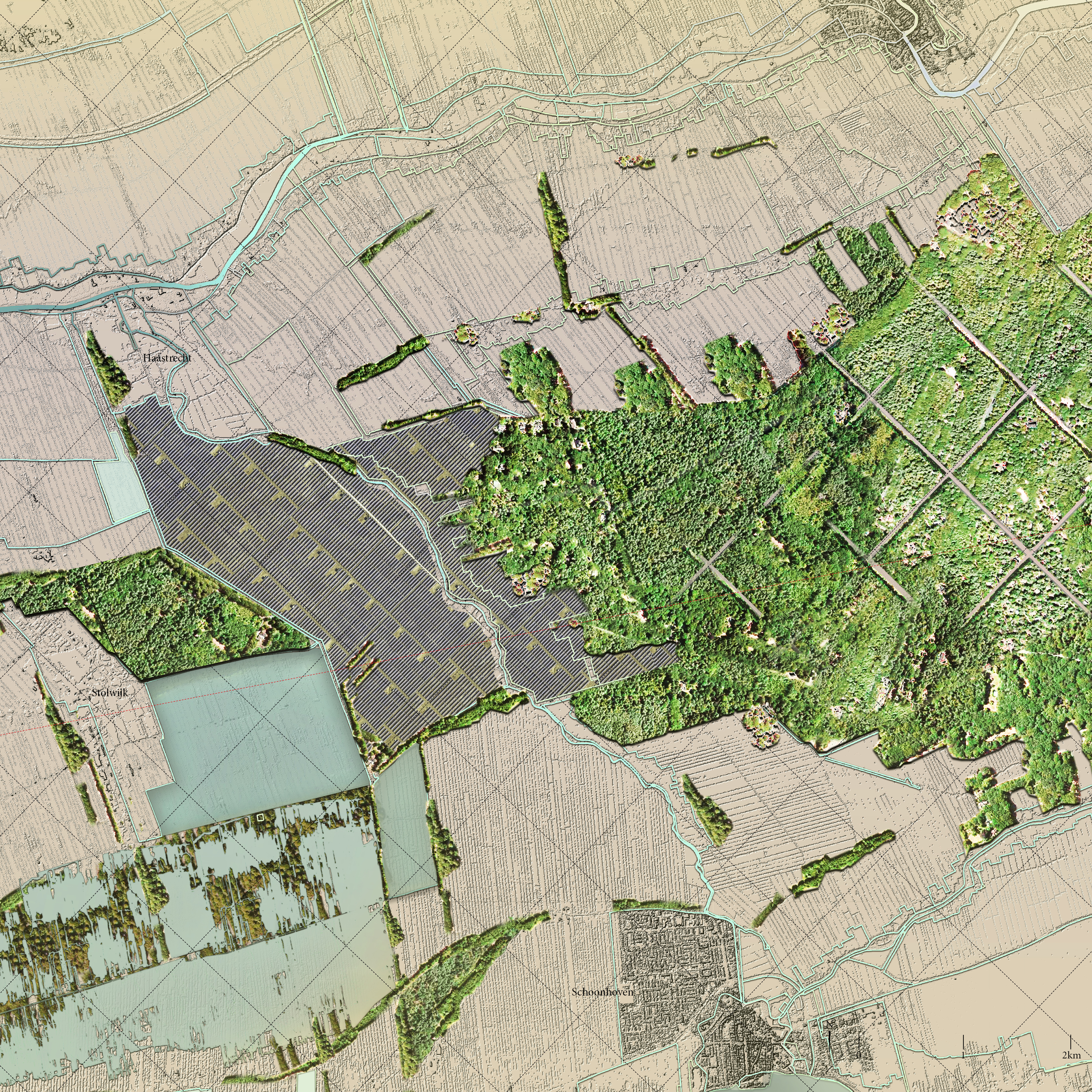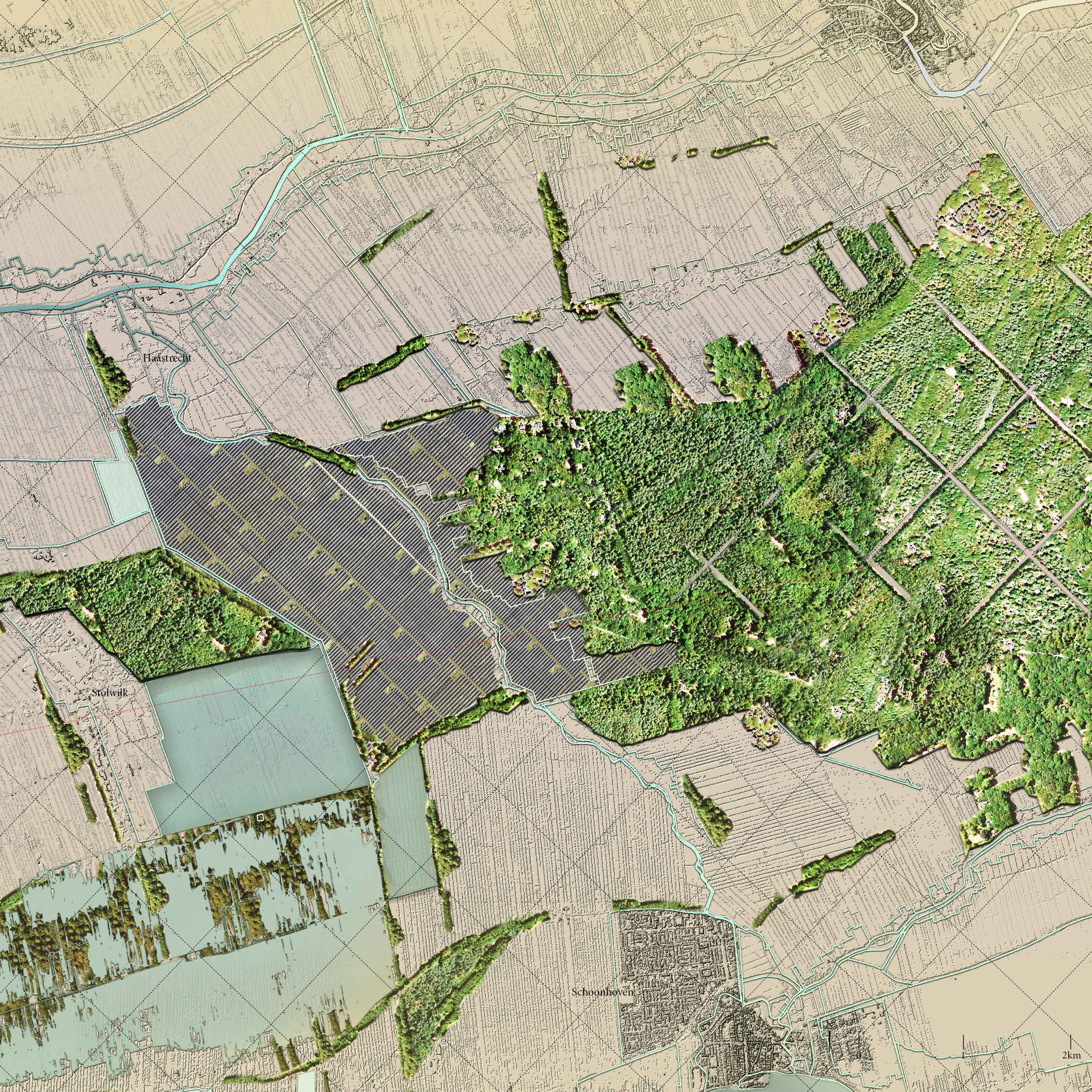- Type: Design project
- Client: International Architecture Biennale Rotterdam 2020- IABR
- Core team: ir. Henk Hartzema, Dipl. -Ing., ir. Aikaterina Myserli
- Status: preselected (event cancelled due to COVID-19)
Grasslands cover almost 1.000.000 Ha in the Netherlands, an area bigger than 50% of the country’s total agricultural area. Being predominantly used for milk, meat and animal feed production, these areas appear to be highly appreciated for their contribution to national economy but are also responsible for more than 10% of the overall Dutch CO2 emissions, as of 2018. Building upon this observation, FRESH and Studio Hartzema developed a data-driven strategy for repurposing highly polluting grasslands and introducing sustainable water-related land uses in their place. A 100x100km snapshot of the Randstad was specifically used as a case-study for this shift and indicated the potential for reshaping the deltaic landscape through depoldering/reflooding tactics, afforestation and renewable energy production.
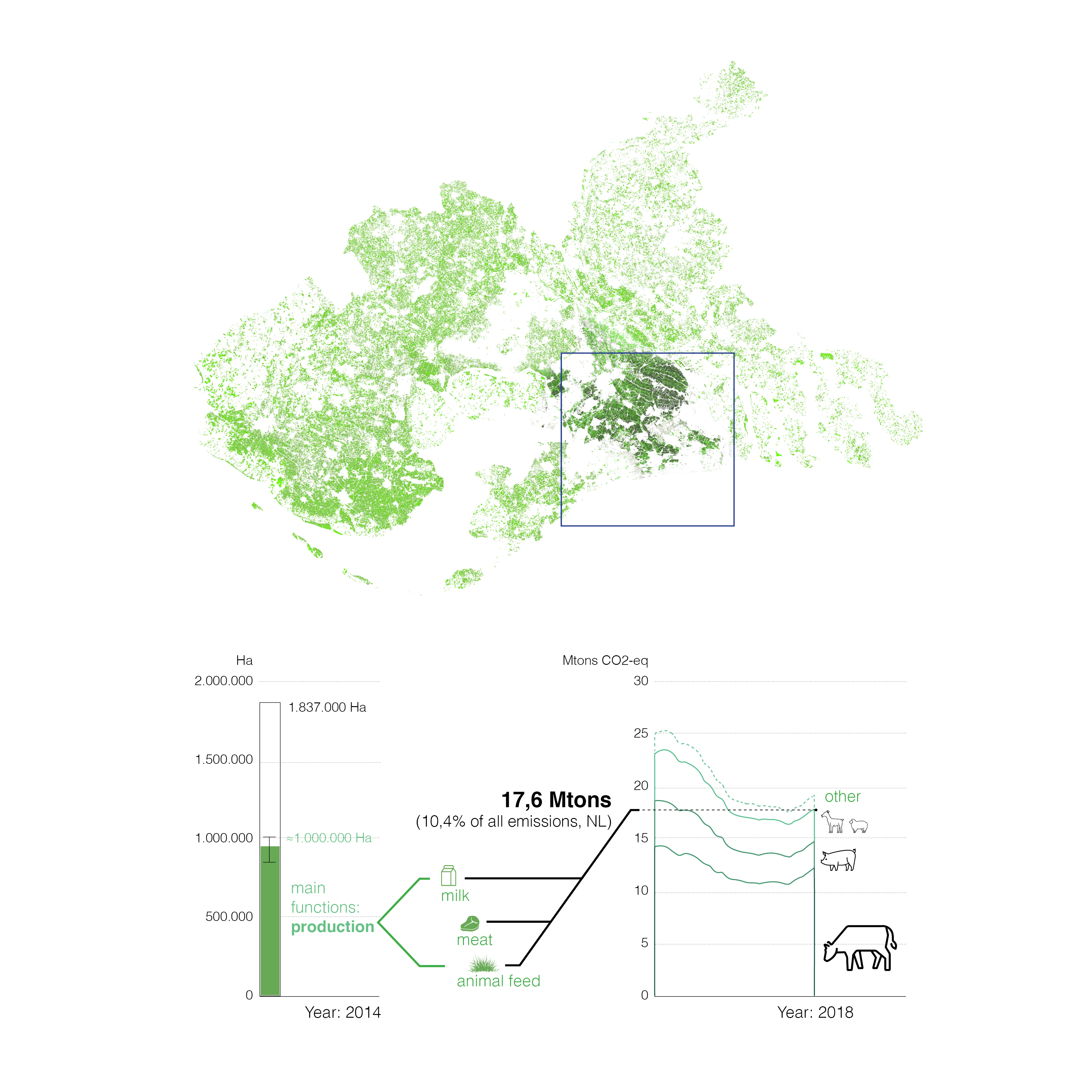
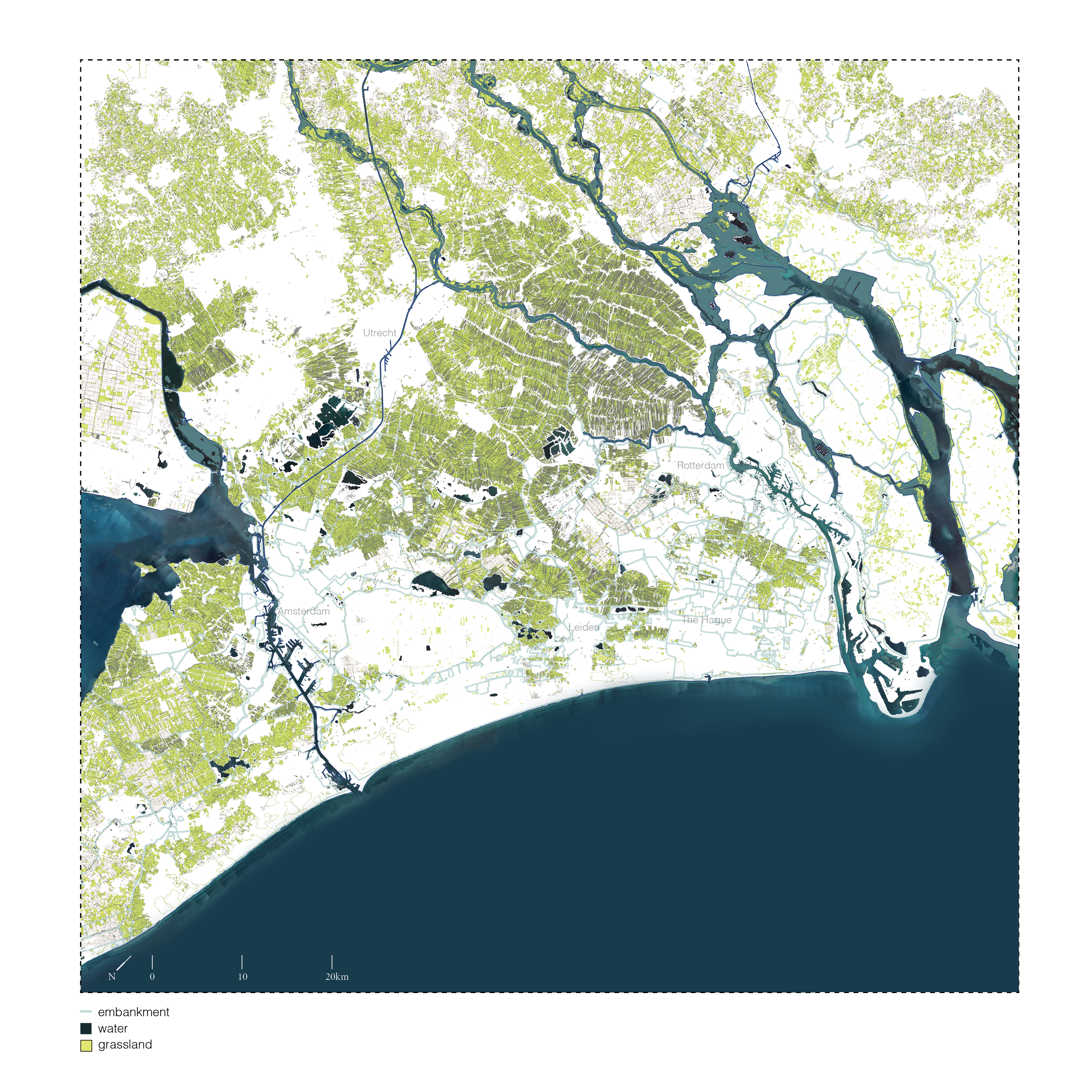
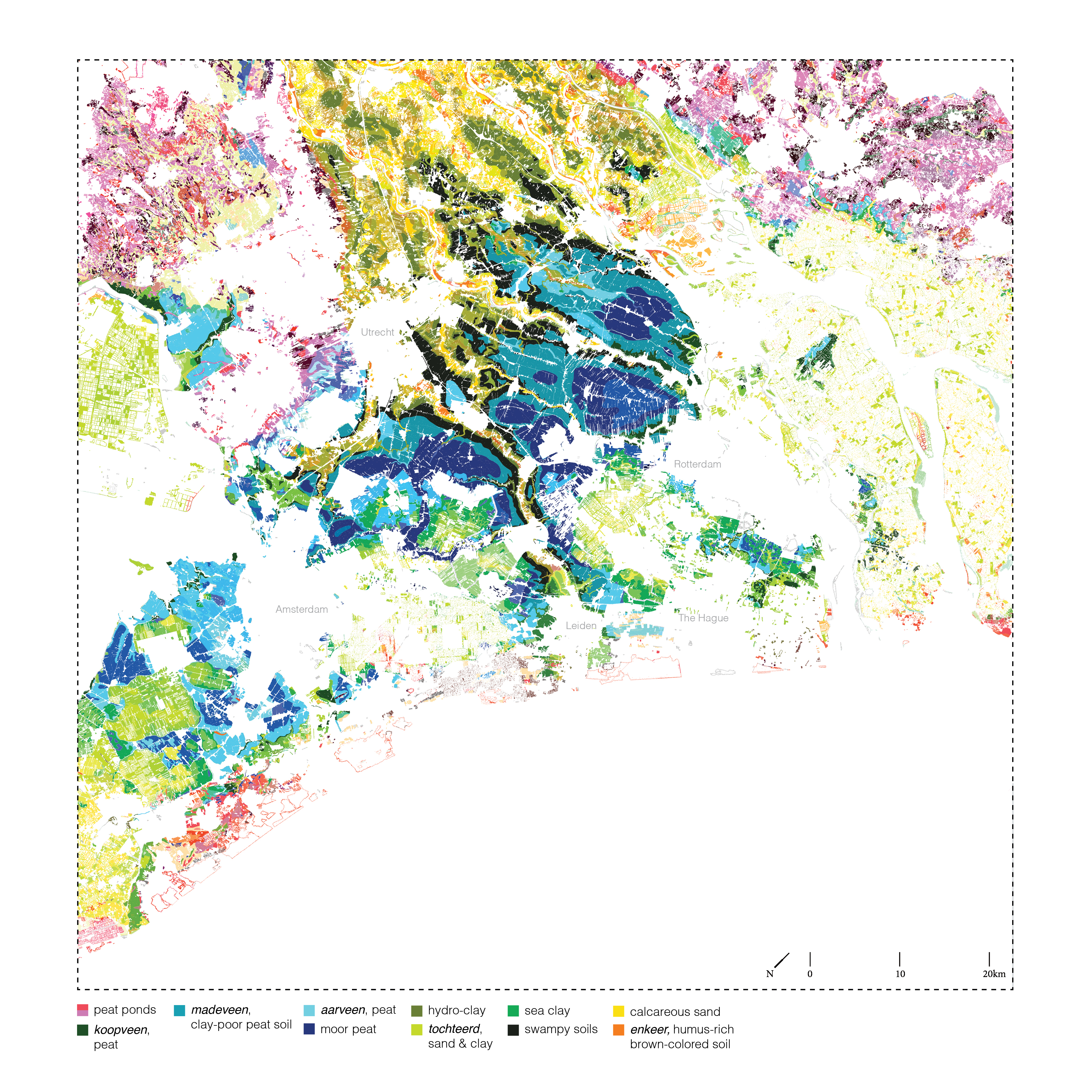
Mapping the soil condition of the grassland territories has provided a clear overview of the situation at hand. In the case-study area more than 80% of these territories is based on peat soils, differing in nutrient consistency and clay or sand subsoil layers. Although peatlands themselves are considered a natural carbon-sink, their intense utilisation for the dairy and meat sector in the Netherlands has increased significantly their CO2 footprint on a national level. As a matter of fact, their restoration through water-related infrastructures would prevent biodiversity loss, further CO2 increase and imperilment of ecosystem services.
This idea was strengthened when examining the role of these territories as drainage basins. Seeing that riverine forces have been threatening for centuries the stability of the human settlements in the Delta, dike systems were gradually developed and land reclamation started to take place in order to set an additional basis for agriculture. Considering the ongoing climate crisis and the expected 80cm sea level rise, a more adaptable approach towards flood defence will be necessary for the area. Given that water could be the main medium to facilitate this approach through aquacultures, wetlands and depoldering tactics, it will be possible to introduce more space for the rivers and restore damaged peatlands at the same time.
Estimations shown that repurposing 10% of the existing grasslands could provide enough space for [a] new water-related land uses, segmented into aquacultures, recreation and soft flood defense measures,[b] renewable energy production and [c] afforestation. Within the scope of an integrated operational framework, these actions could encourage the active participation of various stakeholders (governing sector, planners, researchers, businesses, farmers, civil society and public institutions) and work in accordance with the Sustainable Development Goals of Climate Action, Clean Water and Sustainable Cities and Territories.
